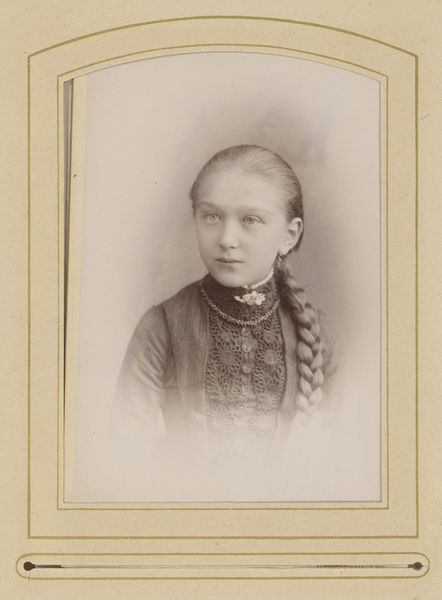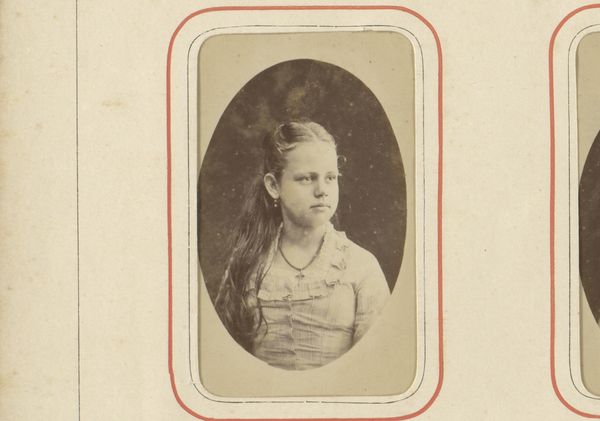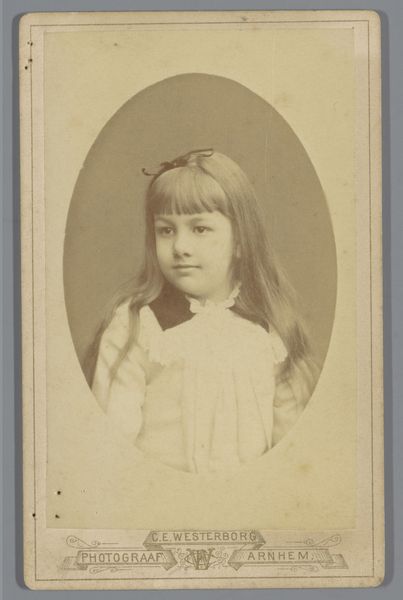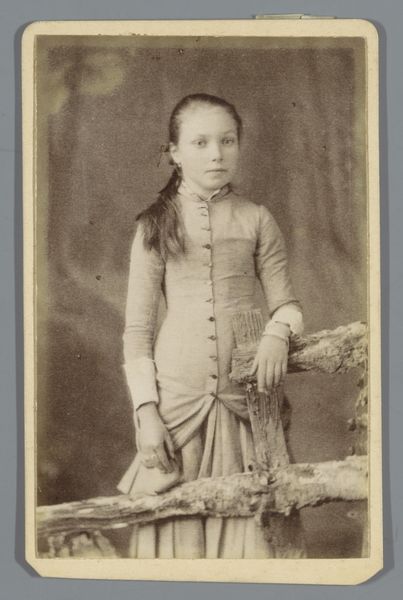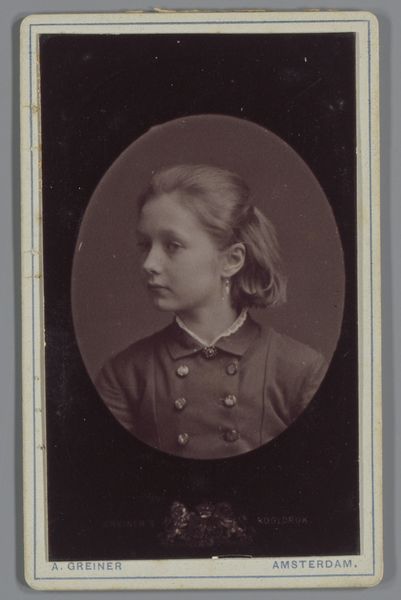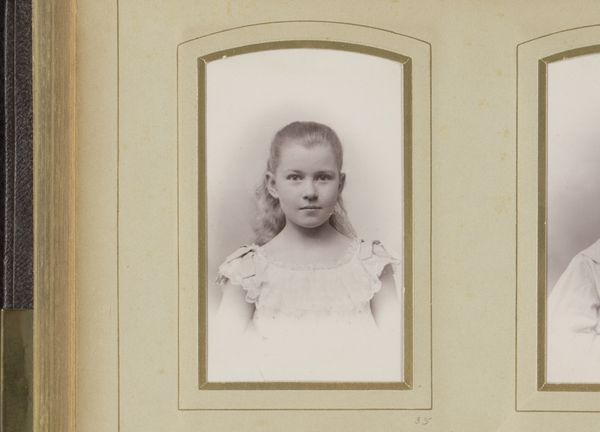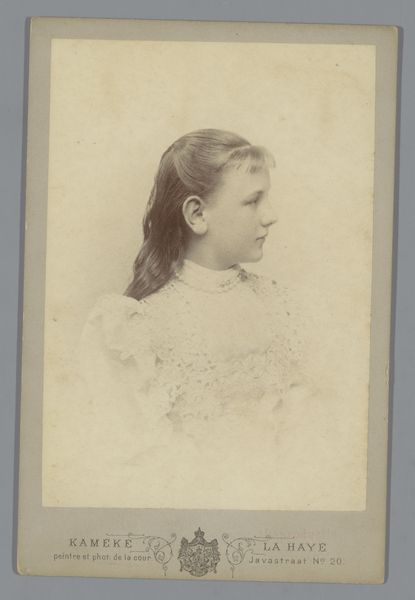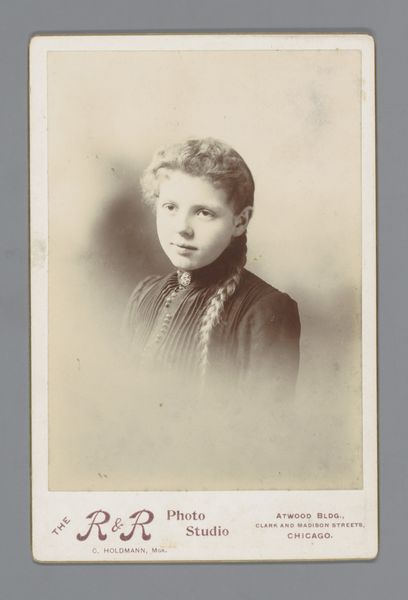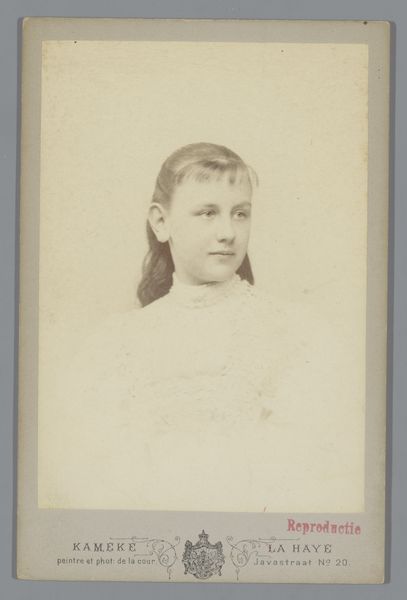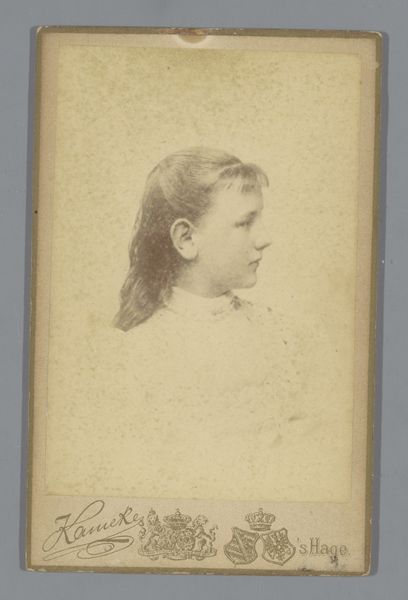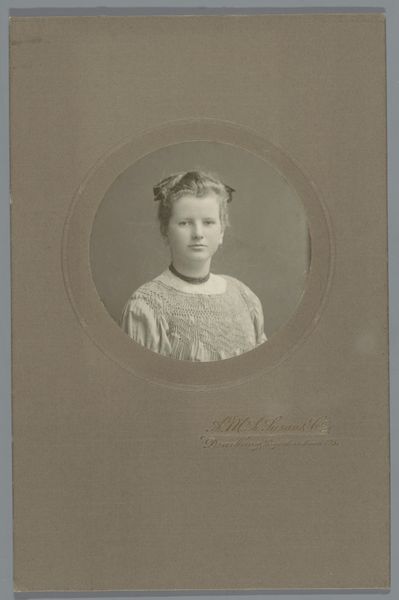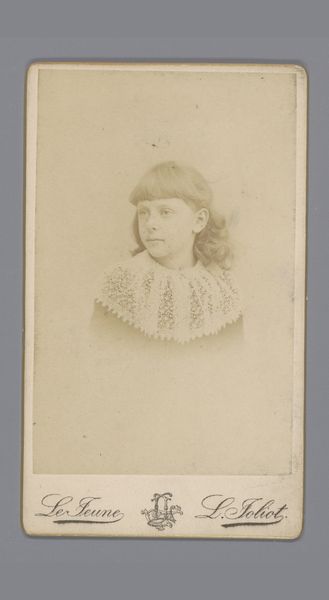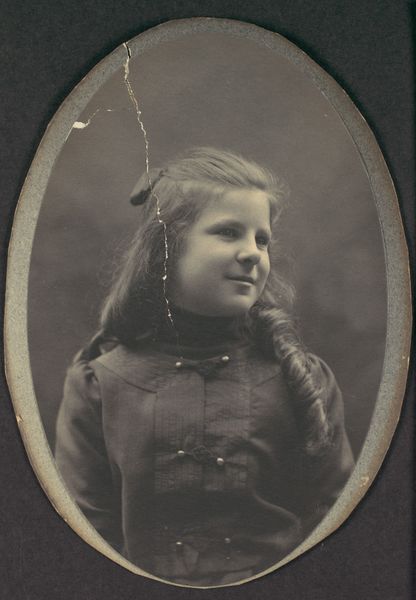
daguerreotype, photography
#
portrait
#
daguerreotype
#
photography
Dimensions: height 104 mm, width 63 mm
Copyright: Rijks Museum: Open Domain
Curator: Let's consider this remarkable piece, a photographic portrait entitled "Portret van Jacqueline E. van der Waals," attributed to Alexandre & Cie., and believed to have been made sometime between 1876 and 1900. It's a daguerreotype, a very early photographic process. Editor: The overall tone is undeniably muted, bordering on melancholy. There's a sepia wash that dominates everything, giving it a somewhat faded, dreamlike quality. I wonder about the labor invested in creating such an object in its time. Curator: The daguerreotype process itself lends that aura. Each one is unique, a direct positive image on a silvered copper plate. Consider what it meant to capture an individual's likeness then, and how it created memory in that time. Editor: Absolutely, and it begs the question—what was the cost of commissioning this? Think about the silversmithing involved in preparing the plate, the photographer’s skill, the chemicals, not to mention the sitter’s time. This wasn't mass consumption. It was bespoke image production for the few. The material circumstances give so much weight to the finished object. Curator: Exactly. And that weight informs our reading of Jacqueline. Her dress, adorned with ruffles and a delicate pendant, subtly alludes to social standing. But beyond that, what symbol is communicated in her calm, almost melancholic gaze? It hints at the interior lives of young women from privileged backgrounds during that era. A sense of constraint, perhaps? Editor: Perhaps the stillness of pose and lack of vibrancy that came with the early photographic techniques played a huge role in that interpretation. Maybe that's just the product of technology at that time. Curator: True. But to have this kind of technology being deployed to specifically portray a woman… there are interesting layers of social narrative within its tones. Editor: Seeing the labor and materiality contextualized certainly gives new meaning to this girl’s portrait, transcending the photographic image into something more human. Curator: Indeed. The image evokes not just her likeness, but speaks volumes about societal values, labor, and material existence, reminding us how a portrait is not merely a record, but a social artifact.
Comments
No comments
Be the first to comment and join the conversation on the ultimate creative platform.
